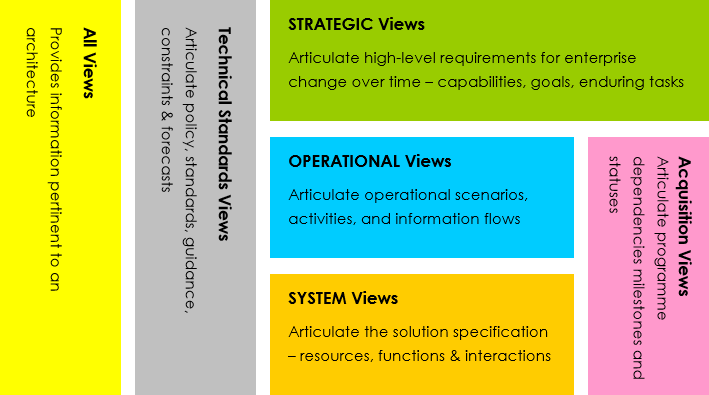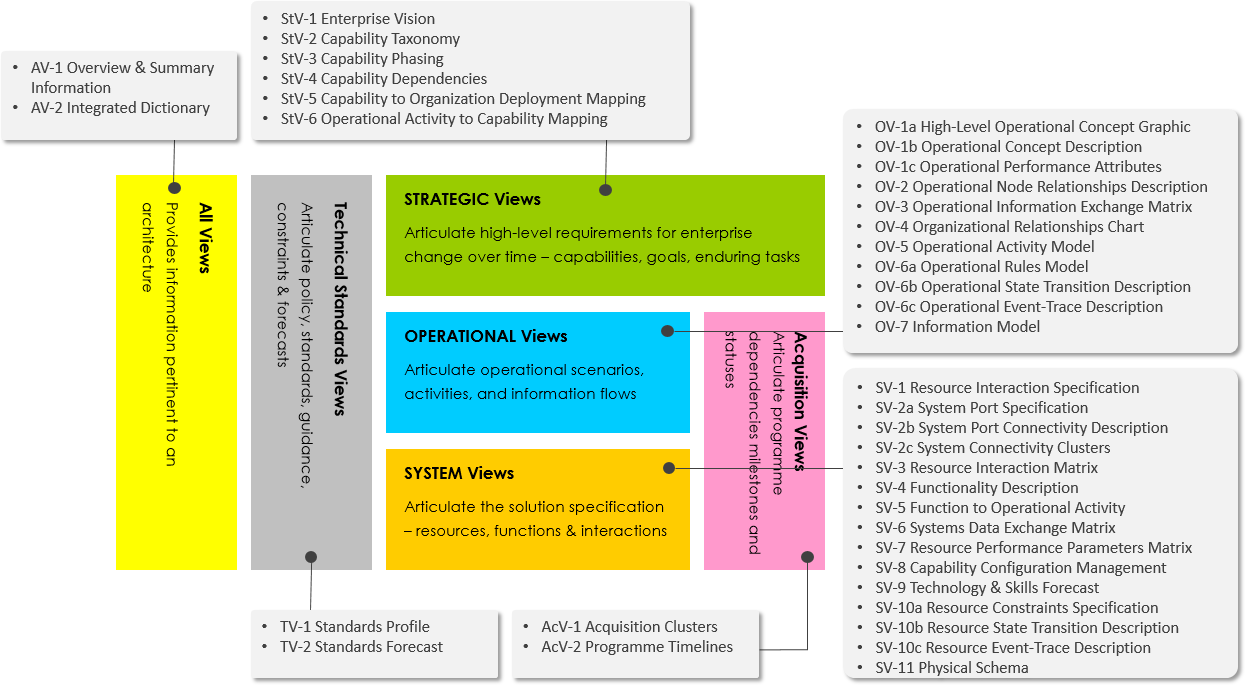MODAF (Ministry of Defence Architectural Framework) is an architectural framework that defines a standardized way of conducting Enterprise Architecture. It is an internationally recognised enterprise architecture framework developed for supporting Defence planning and change management activities. It does this by enabling the capture and presentation of information in a rigorous, coherent and comprehensive way that aids the understanding of complex issues.
MODAF architectures are developed as coherent, contiguous models that when viewed as a whole present a complete picture of the enterprise. MODAF defines a rich selection of relationships which can be used to integrate the various architectural elements.
Each Viewpoint takes a different perspective upon the architectural model; for instance, the Operational Viewpoint considers the operational nodes (logical “actors” that may be realized by one or more resources) that interact in certain ways in order to achieve the desired outcome.
The Views are divided into six categories of viewpoints (Ministry of Defense):

MODAF is used to provide a conclusive set of rules and templates, known as Views that, when completed, provide a view of the business area being investigated by providing various charts, graphs, and text. Each of the different Views offers a separate viewpoint on the business to support different stakeholder needs or areas of interest. MODAF
View Categories

Visual Paradigm provides an easy-to-use, model-driven MODAF software that supports the development of MODAF views and models. Create integrated MODAF products with traceability maintained among views. Generate architectural documents that facilitate organizations to efficiently coordinate enterprise architecture initiatives.
